#utukku
Explore tagged Tumblr posts
Text

Ut-Sudug (Ux Utuk) 1999 Cast Resin
Altro salto indietro nel tempo, fino al 1999. L'Ut-Sudug è un demone il cui nome deriva dal sumero Utukku. Nella mitologia sumera, gli utukku erano entità che potevano essere sia buone che malefiche. Nella mitologia accadica, erano detti utukku sette malvagi demoni che rientrano nella categoria degli spiriti dei morti, talmente pericolosi che potevano ferire o addirittura uccidere solamente con lo sguardo. Risiedevano nei deserti, sui monti, in mare oppure nei pressi dei cimiteri. Erano tutti figli degli Anunnaki, governavano le tempeste diffondendo devastazioni in qualunque luogo. Avevano la caratteristica di risultare inarrestabili, dato che passavano attraverso i muri e sotto le porte.
Modellato in plastilina, è stato realizzato in resina in soli due esemplari.
#fantasy#oroartlab#science fiction#machina septima#machinaseptima#sci fi#sculpture#monster art#gargoyles#Demon#hp lovecraft#utukku#resin art#cast resin#maquette#statue
2 notes
·
View notes
Text
Foundation of Faith (Cleric Archetype)
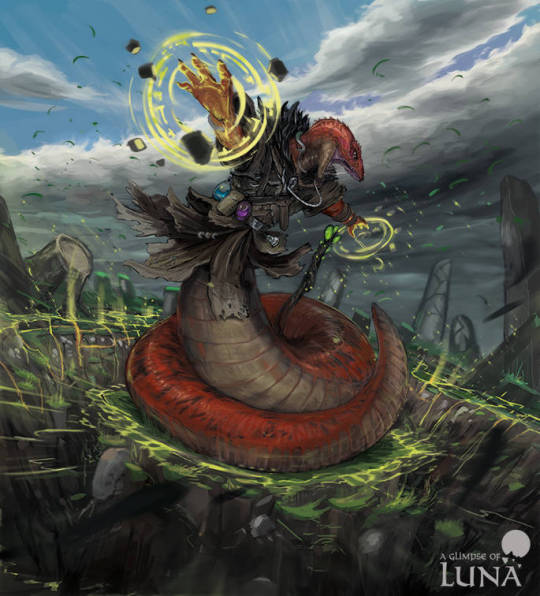
(art by ThemeFinland on DeviantArt)
When it comes to the faithful, there are those whose belief is unshakable, who stand against aversity with their deity by their side through thick and thin, and inspire others with their resolute attitude.
And today we focus on an example of that with a lovely little pun of an archetype, the Foundation of Faith!
Most common among deities of earth and stone, these priests are able to draw upon the strength of the earth itself, becoming nearly unmovable and gaining vitality from the act.
Despite the association, it is possible for clerics of other deities to gain such power. Though, obviously worshippers of deities of the air might find it difficult to make use of such abilities.
There’s a certain element of the Greek myth of Antaeus, a giant whose was empowered while in contact with the earth, though it should be noted that said giant was slain by Heracles when he lifted him off the ground and squeezed the life from him. Hopefully your cleric avoids clever wrestlers.
As we will soon see, these clerics can, however, stand resolute against most any foe as long as stone is under their feet.
As long as they are in contact with the earth, their bodies and their hearts are unassailable. Indeed, they become very hard to forcibly move or intimidate.
Their focus is also impressive, as they can center themselves to concentrate upon a spell even under duress.
However, their truth strength shows when they stand upon worked or unworked stone and take a moment to draw upon it’s energies. When they do so, they slowly heal their wounds over time. Alternatively, they can bless allies on similar terrain with a lesser version of this healing as well.
A simple archetype, but one that trades the cleric’s ubiquitous channel energy for more gradual healing which can be done as a swift action. With their focus on constitution and healing over time, these clerics are definitely meant for the front lines, so a tanky combat built is a natural pick for them.
While using this archetype with any sort of earth-themed deity is a natural choice, It’s even more interesting to find justification for using this archetype with other deities? Perhaps every deity in your setting had a hand in creating the “world”, or perhaps more resolute deities draw parallels between earth and steadfastness, and so on.
Suspecting that something isn’t right with the new cult that promises “oneness with the cosmos”, Onnark the Resolute does some investigating, discovering that this supposedly peaceful group worships the tainted promises of utukku qlippoth, nightmarish outsiders and rival to demonkind that seek to bypass evil souls becoming demons by merging them with the Abyss directly. The stalwart cleric makes ready to destroy the cult’s leaders and fiendish master, but he could use help, for the most immovable rocks are shored up with good foundation, after all.
Seeking stability but being called by the teachings of the River Goddess, Folva the half-elf chooses the path of the River Stone, a branch of the faith that act like large rocks in a stream, their presence creating relatively still eddies in their wake, just as the clerics themselves provide safe places for the traveling majority of the faithful and other river travelers to rest their head at waystations, river towns, and the like. It is a humble life, but a good one, and their divine power provides protection to those in need.
With the soldiers behind the walls bolstered by priests of the Siegemaster, it seems like the people will hold out indefinitely against the invaders. However, the invaders have their own ways to try and breach the defenses, starting from within.
#pathfinder#archetype#cleric#foundation of faith#utukku#qlippoth#half-elf#Elemental Master's Handbook
7 notes
·
View notes
Text


Redrawing the old 20 years drawing to a new digital one. First old drawing is sketched and coloured with coloured pencils and newest one was drawn whole digitaly with same pose, but adding more things there. Do I really improve after long years?
1 note
·
View note
Text
I have this dumb mental image of an aged Liara, now in her Matriarch stage centuries after the end of the games leading a diplomatic mission into Krogan space. Upon arrival her staff are horrified by a band of Krogan soldiers that meet them at the landing zone led by a grizzled leader. His scales marked by a hundred battles and a demeanor to match, roaring out a 'request' to speak to "the one in charge."
The mood is tense. Krogan space is civilized but along its border bands of renegades, holdouts of the old ways of war aren't uncommon. The mission has a few Asari commandos providing security but they're outnumbered two to one. Should they turn back? Stall for time and try to plan an escape?
Instead, Matriarch T'Soni holds up a hand, calming her staff and without a word, walks down the ship's ramp towards the Krogan completely unarmed, in nothing but her gown, ignoring the cries behind her begging her to come back.
She reaches the band of Krogan warriors, looks the leader up and down and places her hands on her hips.
"Is this anyway to greet your mother, Grunt"?
A tumbleweed passing makes the only sound
The Krogan grins, and scoops Liara into his arms for a hug, lifting her off her feet and spinning her 'round.
"I missed you." He says softly. She pats his shoulder as he places her down again.
"It's good to see you again too Grunt. You've got quite the command here it seems." She feels a smile on her lips as she waves her hand at the Krogan milling about, all trying their best not to stare, just as stunned as the members of the Asari mission.
"Yep. I've got my own brigade now. Aralakh Brigade. Over 2'000 strong. All under my command." His voice rings with pride. Liara nods.
"She'd be proud if she were here you know. Of what you've become Grunt. Following in her footsteps."
Grunt laughs. "She would, wouldn't she"? He doesn't wait for an answer and Liara knows he doesn't need one. They both know the answer. Shepard had taken Grunt in, seen past the tank bred warrior exterior to the boy beneath and had taken him to her side.
When Liara learned of this upon meeting Grunt for the first time on Utukku (Learning her bond mate had an adopted son that she'd never seen fit to mention) she had been surprised, but surprises were something she had grown used to with Shepard.
"Kid just needs a bit of direction Liara. Give him a chance." She could still hear Shepard's voice in her memory reassuring her.
She had been right "on the money" as she was fond of saying.
Liara ran a hand down her front, straightening the folds of her dress as she put back on her 'matriarch face'. "Well then. We have a schedule to keep. A meeting with the planetary overseer. Would you escort us"? She asked aloud.
Grunt nodded, with a slight twinge in his own voice putting on his 'Commander' voice. "I'd be honored, Matriarch T'Soni." Turning he bellowed out to his troops. "Form up!"
Liara walks back to her staff, almost all with wide eyes at what's unfolded before them. She crosses her arms. "As I recall we have a schedule to keep, do we not?" Breaking the trance they rush to their duties. She turns her back to them, hiding a small smile and watches Grunt form up his troops. The way he orders them into formation reminds her of no one but Shepard, a small piece of her still alive all these years on.
She would be proud.
...
I'm of the option that Femshep is Grunt's adoptive mom, and realized that even if she won't be around forever with Grunt, a romanced Liara certainly would be.
311 notes
·
View notes
Note
I remember reading that Mesopotamia doesn’t really have vampires or anything close to that is this true
The notion of a “Mesopotamian vampire” called ekimmu appears to be widespread in assorted vampire lexicons of questionable quality (ex. Bob Curran, Vampires: A Field Guide to the Creatures That Stalk the Night, p. 26-33 - I barely made it past “god Irkalla”; Stuart A. Kallen, Vampire History and Lore, p. 12-14; Brad Steiger, Real Vampires, Night Stalkers and Creatures from the Darkside, p. 1) - typically with no sources cited, or with the only sources being other similar publications. None of this has any value.
Simply put, the ekimmu is a mirage. No such an entity is attested. More under the cut.
The last time anyone used the term ekimmu in an assyriological publication was in 1952 - in René Labat’s review criticizing the use of outdated, incorrect readings in a book written by a non-specialist relying on at best secondary sources - in this case, a mistaken old reading of the ordinary Akkadian word etemmu (p. 128). The term etemmu is the Akkadian word for what a person becomes after death - “spirit” is probably the optimal translation. It is fascinating how often the alleged “vampire” is automatically labeled as “Sumerian”; the Sumerian translation - which could actually be used as a logogram to write the Akkadian word - is gidim (Tzvi Abusch, Etemmu in Essays on Babylonian and Biblical Literature and Religion, p. 87).
According to Atrahasis, etemmu was something humans by default possess since their creation - a punning etiology derives this term from the ṭēma (“understanding”, “intelligence”) of Wê-ilu, who at least in this myth serves as the source of “raw materials” for the creation of mankind (Alhena Gadotti, ‘Gilgamesh, Enkidu, and the Netherworld’ and the Sumerian Gilgamesh Cycle, p. 112)
The fact that every single dead person was an etemmu alone should be enough to show that this term does not primarily designate a malevolent being. An etemmu whose family made sure to follow the appropriate funerary rites - burial, offerings, etc. - would then integrate into the “society” of the underworld; this was the standard fate, reflected in a plethora of literary texts. Sometimes dead ancestors of this sort could even be invoked in exorcisms to protect the patient (Etemmu…, p. 87-89). Problems could arise in absence of a burial or funerary offerings, or in the case of the destruction of a body. An unburied, forgotten etemmu would eventually lose the grasp of their original identity, and drift towards the formless, generally poorly defined state of being associated with demons (Etemmu…, p. 88). They were simply designated as eṭemmu lemnu - “evil etemmu” (Daniel Schwemer, Any Evil, a Stalking Ghost, and the Bull-Headed Demon, p. 150). There is some evidence that such an entity could be imagined with a bull’s head, as best reflected by the description known from the Underworld Vision of an Assyrian Prince (Any Evil…, p. 154-155). Since there is evidence that in certain situations the bellowing of a bull - or noises resembling it, including tinnitus-like symptoms - were an ill omen. Making the evil etemmu - whose appearance was a bad omen in itself - capable of emitting such noises by providing them with bovine traits would then likely reflect the widespread idea that malevolent supernatural beings were capable of making animal noises (Any Evil…, p. 158). Some sources indicate that a roaming etemmu who lost their original identity could potentially become an utukku (Etemmu…, p. 88). However, it should be noted that utukku is a notably vague category which also encompassed benevolent entities (Markham J. Geller, Udug in RlA vol. 14, p. 274).
In any case, even if we were to limit the meaning of etemmu to the most malevolent specimens - which would obviously be disingenuous and outright against the actual meaning of the term - nothing here is really “vampiric” in any meaningful way. Doesn’t matter whether you apply this term to refer to the vaguely defined category of entities from European folklore, to movie monsters based on them, or more broadly as an umbrella term for blood-drinking legendary creatures. I suppose everything starts to look like a nail if all you have is a hammer, though - and that’s how all that vampire literature reads to me…
Granted, I am under the impression this is generally not the most rigorous of disciplines (if it’s even fair to call it that). Note that one of the very few examples to make it to jstor - James Craig Holte’s Not All Fangs Are Phallic: Female Film Vampires - couples the ekimmu claim (explicitly based on the author’s questionable interpretation of an almost century old publication) with speculation about some universal mother goddess or the like then demonized into female vampires (of the sort which really only goes back to 19th century novels), somehow (p. 163-164).
56 notes
·
View notes
Text
Qlippoth Boons- The Ladies

(Qlippoth Assault by Lie Setiawan)
The Qlippoth are one of my favorite aspects of Pathfinder's campaign setting- ancient squirming entities that exist in the overlap between adventure fantasy and cosmic horror. I understand why they're on the lower tier of boons- that is, their boons are entirely a set of three SLAs- they hate worshipers and are an anathema to souls. Consider these boons to be less something they've started giving out, and more a way that secret cults have learned to wrest power from these twilight divinities. The initial obedience and its basic boon are taken straight from PF canon, and I've chosen a handful to keep around.
If you're not familiar with these lovely ladies, I reccommend @monstersdownthepath's lovely articles in their Beasts from Before Month, and I'd also like to thank them for extracting these images from their bestiary!
Also; Major content warning for body horror! These two are themed around pregnancy and parasites in that order, and if either of those things skeev you out, it's best you give this one a pass!
Oaur-Ooung

(Oaur-Ooung by Alexander Alexandrov)
Obedience: Drink fouled water, and maintain yourself on the edge of regurgitation for an hour. Gain a +4 profane bonus on saving throws against poison effects.
Boons
First Boon Mother’s Embrace- Summon Swarm 3/day, Fungal Infestation 2/day, or Black Tentacles 1/day
Second Boon Mycelium Strands- Strings of your mistress’s mycellial network begin to grow inside you and burst through your skin, allowing you to grasp distant foes and hold tight to your enemies. Increase your natural reach by 5ft and gain a +4 profane bonus to grapple checks.
Third Boon The Gift of Life- Whatever your anatomy, your body begins producing qlippoth at a daily rate. At the start of the day, upon completing your obedience, a random qlippoth from among from among an augnagar, a chernobue, a gongorinan, a nygoth, a shoggti, or an utukku begins gestating within your flesh, giving you a -2 penalty to AC and to charisma-based skill checks, but 2 temporary hit points per level. Upon you taking 50 or more damage, or at the end of the day, the qlippoth bursts from your flesh, dealing an additional 2d6 slashing damage to you. The qlippoth is loyal to you for 1 hour, after which it will come to find all ensouled beings to be an anathema.
Isph-Aun-Vuln

(Isph-Aun-Vuln by Alexander Alexandrov)
Obedience: Consume a handful of live parasites or infested flesh. Gain a +4 profane bonus on saving throws against disease and parasitic infestations.
Boons
First Boon From Inside- Detect Thoughts 3/day, Suggestion 2/day, or Fleshworm Infestation 1/day
Second Boon Soul Parasite- Gain Possession as a spell-like ability usable 2/day.
Third Boon Writhing Form- Your body and soul become infested with primordial, abyssal parasites. As a move action, you may dissolve your flesh into a pile of writhing abyssal grubs that, as a gestalt, contain your mind, and may stay in this state until you choose to leave it. While in this state you become an Outsider with the Swarm subtype, take up 10ft of space (square if you can’t fly, cubed if you can), and gain a swarm attack with Distraction that deals 1d6 damage for every 2 HD you have. The Distraction DC is equal to 10+½ your total HD+your Constitution modifier. A creature killed by your swarm attack has its soul devoured by you and cannot be revived with anything short of divine intervention. You can not cast spells that have a somatic component in this form and cannot wield weapons.
25 notes
·
View notes
Photo

Cuneiform tablet: Utukku lemnutu, tablet 12. ca. late 1st millennium BCE. Credit line: Purchase, 1886 https://www.metmuseum.org/art/collection/search/321991
#aesthetic#art#abstract art#art museum#art history#The Metropolitan Museum of Art#museum#museum photography#museum aesthetic#dark academia
15 notes
·
View notes
Text
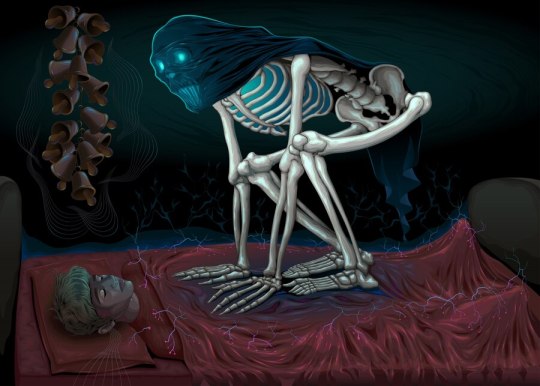
The Alû [Babylonian, Mesopotamian mythology]
In ancient Babylon, belief in possessing demons or spirits was not uncommon, and these entities were often used to explain symptoms or diseases. Often, specific demons were blamed for pains and illnesses of specific body parts: the ‘Utukku’ demon was associated with the human neck, the ‘Gallu’ usually attacked hands, and the evil invisible ‘Alû’ demon was more associated with the chest.
When an Alû possessed someone, the victim would often become very warm (I assume this refers to a fever) and fall unconscious while their eyes remain open, as if fixating on something. This creature was associated with sleep (usually attacking sleeping victims), and their victims would lose the ability to speak during possession. Furthermore, being possessed by one of these beings would make people hear a ringing noise and lose strength in their limbs. The next morning, when the victim awoke, they felt weak and drained of energy.
If you have ever experienced sleep paralysis, these symptoms might sound familiar. Indeed, it is thought that the story of the Alû arose as a way to explain sleep paralysis. Because of this ‘draining’ property, I have found that these creatures are sometimes associated with vampires today.
While these are the specific symptoms for the Alû demon, the term was also used as a general word for possessing demons and was sometimes used interchangeably with ‘Utukku’.
Sources: Finkel, I. L. and Geller, M. J., 2007, Disease in Babylonia, BRILL, 226 pp. Bane, T., 2014, Encyclopedia of Demons in World Religions and Cultures, McFarland, 416 pp. Jastrow, M., 1893, The Religion of Babylonia and Assyria, Handbooks on the History of Religions Volume II, Ginn & Company, 782 pp. (image source: ‘Sleep Paralysis Demon’ by Ddraw on Freepik)
104 notes
·
View notes
Text
WIP whenever
@sleepytimegrrl tagged me. The next chapter is waiting to see if @swaps55 comes back from middle earth (current betting says 'no', but her dog is still here, so maybe), so this is from the chapter after that.
Shepard had lead them into the tunnels, and when they encountered the first reaperized rachni, they hadn’t even slowed down. The rest of the Normandy team had become the rear-guard, which was what ground-pounders called themselves when they couldn’t keep up. Brood chamber after brood chamber had gone up in flames. The atmosphere of Utukku was breathable — just — but the troops kept their helmets on. The oxygen was for the fire. Rachni 2, Joker thought. This time it’s personal.
IDK who to tag who isn't pretending to be a hobbit, the actual hobbit who tagged me, or about to undergo major surgery, so, uh. Have fun, anyone!
9 notes
·
View notes
Text

“Sholto's bruised immensity made the woman alongside him seem even thinner than she actually was. A stooping heron of a creature, she was dressed in a gray top and a long black skirt, with straight white hair chopped short abruptly behind her ears. Her face was all cheekbones and eyes, and entirely colorless—even her eyes were washed out, two dull marbles the color of rainwater sitting in her head. Long-nailed fingers like scalpels jutted from her frilly sleeves. She carried the odor of authority and danger: the utukku clicked their heels and saluted as she passed, and with a snap of her too-sharp nails, the portal behind her closed into nothing”.





#hello bartimaeus fandom how have you been#jessica whitewell#bartimaeus trilogy#bartseq#amulet of samarkand#of course it's me with my evil women in this tag again#of course#/pos#трилогія бартімеуса#джесіка вайтвел
10 notes
·
View notes
Text
Mesopotamian Edimmu
The evil Edimmu from ancient Mesopotamian mythology represents death, the afterlife, and inappropriate burial. From Sumer, Akkad, and Babylon's rich cultural and religious traditions, the Edimmu shows the ancient Mesopotamians' deep concern with respecting the dead and balancing the living with the spiritual. These restless spirits, frequently depicted as vengeful and deadly, reveal the old worldview and the importance of ceremony, respect for the deceased, and cosmic equilibrium. The Akkadian "Utukku" (Edimmu) was considered to be the ghost of a person who died unjustly. These scenarios included poor burial customs, violent or untimely death, or family neglect that failed to provide afterlife gifts. Mesopotamian belief held that the deceased needed food and drink to be comfortable in the underworld. Without these offerings, ghosts could become restless and return to the living as Edimmu, tormenting them out of resentment and hunger.
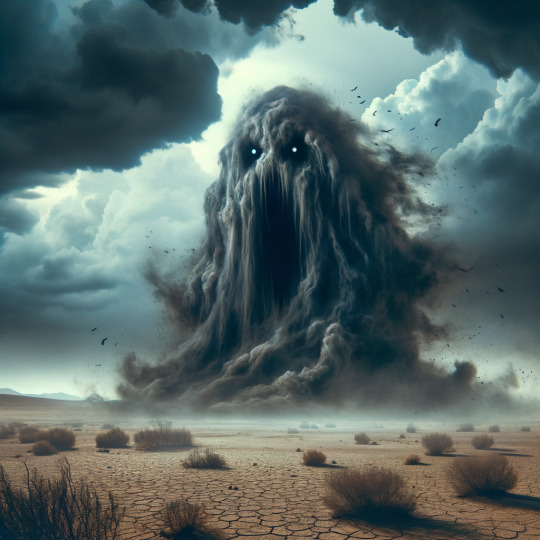
People feared the Edimmu due to their potential to cause harm in various ways. They were associated with illness, disaster, and madness and indicated spiritual imbalance. The Mesopotamians thought these spirits might inhabit the living and cause physical and mental illness or haunt families and people, causing chaos and sorrow. The Mesopotamians also believed that the Edimmu fed on living people. This belief stems from a cultural apprehension about death and the unknown, as well as the belief that the boundary between the living and the dead is fragile and susceptible to disruption due to negligence or criminal activity. Ancient Mesopotamians used rites, prayers, and magical incantations to avoid the Edimmu. These rituals appeased, banished, or prevented ghosts from returning. These ceremonies relied on priests and exorcists to mediate between humans and spirits. They used incantations, sacrifices, and cleansing ceremonies to restore equilibrium and fight off evil spirits. These acts show how closely religion and daily life were in Mesopotamian civilization and how dread of spiritual retribution for not honoring the deceased permeated society. Edimmu also shows ancient Mesopotamian morality and society. Proper burial and care for the departed were both respectful and socially required. Failure to perform these obligations disrupted cosmic order and violated collective responsibility. This belief system stressed family relationships and the need to protect traditions and maintain physical-spiritual equilibrium. The Edimmu warned against disregarding these commitments and reminded us of the interconnectivity of all things.
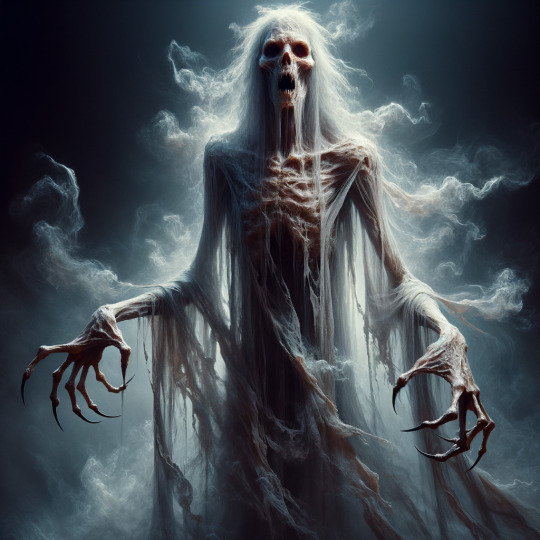
It's fascinating that the Edimmu predated numerous ghostly and vampiric entities in later folklore and mythology. Their restlessness, affiliation with death, and parasitic feeding on the living resemble ghosts, wraiths, and vampires from around the world. This continuity shows how universal human concerns are with death, the afterlife, and the implications of not honoring the deceased. In conclusion, the Edimmu in Mesopotamian mythology symbolize the anxieties and duties associated with death and the afterlife. These malicious spirits reminded us to follow customs, honor family, and maintain the delicate balance between the living and the dead. The Edimmu may no longer haunt our imaginations, but their history shows humanity's preoccupation with death and the unseen forces that shape our lives. Their story is both a warning and a window into one of the world's oldest civilizations' values, beliefs, and anxieties.
#edimmu#mesopotamia#paranormal#ghost#ghosts and spirits#ghosts and hauntings#ghost art#ancient history#akkadian
3 notes
·
View notes
Text
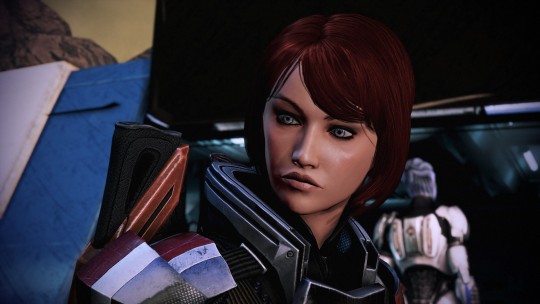
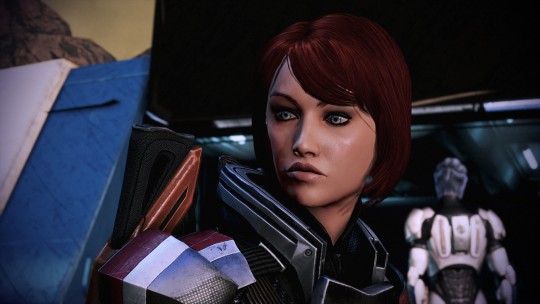
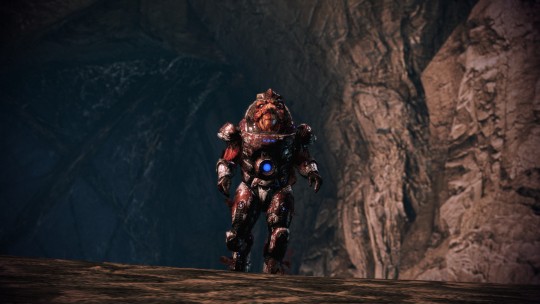
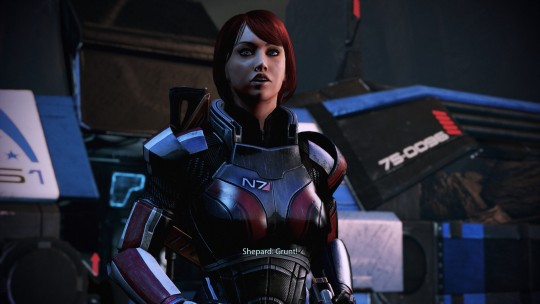
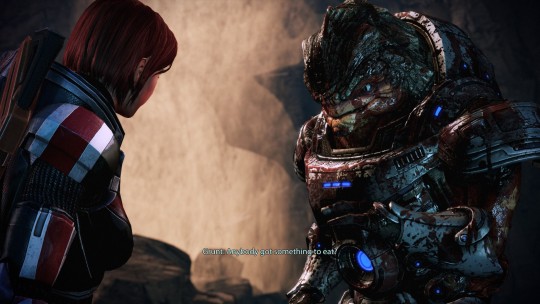
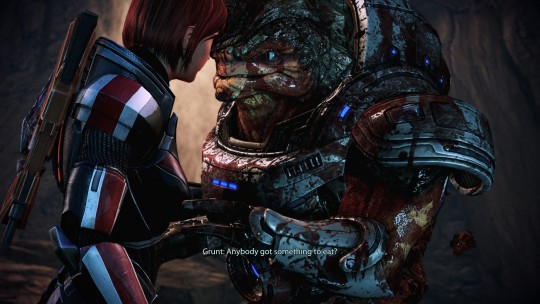
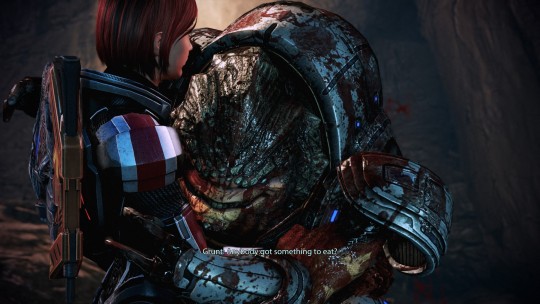
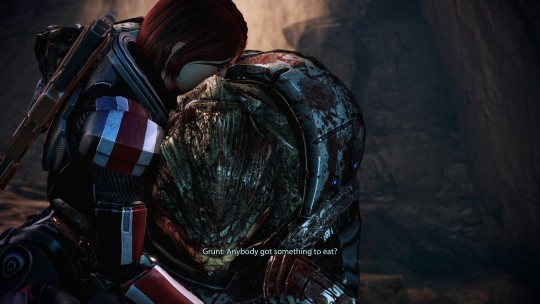
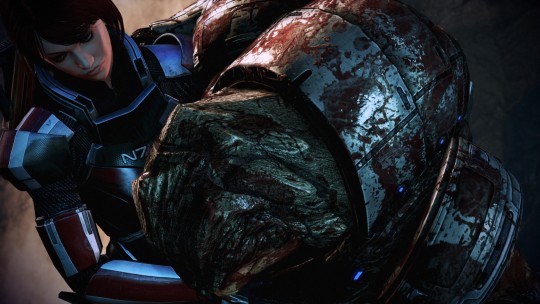
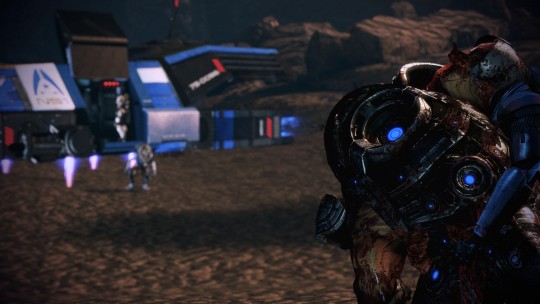
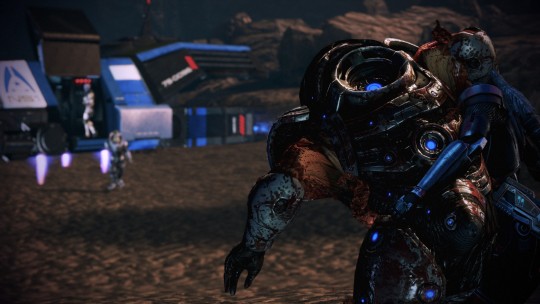
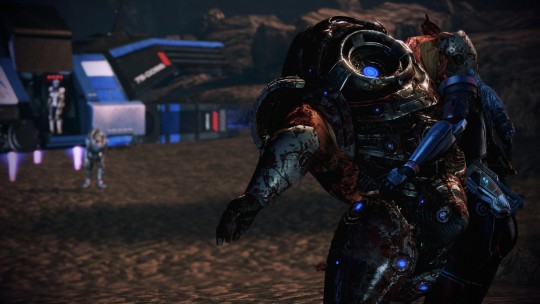
ME3 Grunt Mission Ending - Utukku
#shepard was prob so happy to see her child make it#also i always love how garrus just walks over in the end like guess i have to help my son too#and can we talk about how shep is able to even hold grunt at all like wow lol#shakarian#garrus x shepard#garrus x femshep#femshep x garrus#mass effect garrus#garrus#garrus vakarian#commander shepard#femshep#mass effect grunt#grunt#tank grunt#mass effect legendary edition#masseffect#mass effect#mele#selene shepard
6 notes
·
View notes
Text
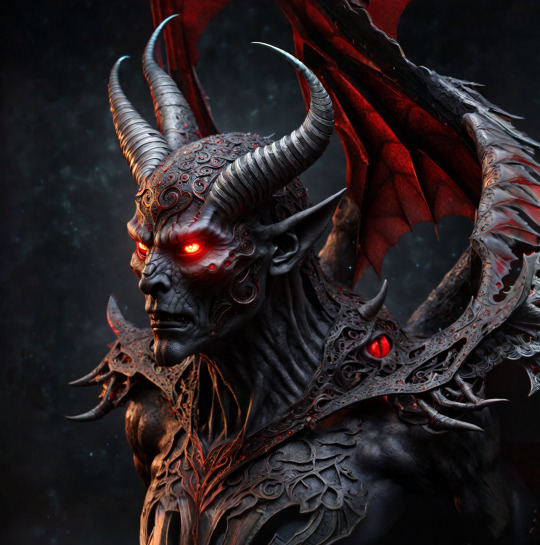
The Intriguing Role of Demons in Religious History
Demons. The very word evokes a sense of mystery, conjuring images of shadowy figures lurking in dark corners, whispering malevolent secrets. But these enigmatic beings are not just figments of imagination. They have a rich and diverse history, spanning from the ancient Mesopotamian myths to the modern manifestations in pop culture. Throughout this timeline, they were an integral part of daily life, and their presence was felt in numerous cultures' religious texts, folklore, and literature. The concept of demons has evolved, yet it remains a potent symbol of the unknown and the supernatural, a topic that continues to intrigue and fascinate.
The Concept of Demons in Ancient Religions
Mesopotamian Roots
In the cradle of civilization, Mesopotamia, demons were not just a part of the spiritual beliefs. They were integral to daily life. Known as 'Udug' or 'Utukku,' these entities were not just malevolent spirits thought to bring disease and misfortune but also a constant presence in the lives of the ancient Sumerians and Akkadians. They believed these demons could be appeased or warded off through rituals and offerings, a testament to their deep-rooted faith and respect for the spiritual realm. These beliefs were not mere superstitions but a way of life, a constant reminder of the delicate balance between good and evil in their world.
Egyptian Beliefs
The Egyptians also had a complex and multifaceted relationship with these otherworldly beings, called 'demons' or 'spirits.' Some, like Apophis, the serpent god who embodied chaos, were malevolent, while others, like the household gods Bes and Taweret, played protective roles. Egyptian mythology, a rich tapestry woven with tales of these spirits, stretches its influence across the mortal and divine realms. To fully immerse in the wonder of this mythology, a visit to Encyclopedia Britannica's article on Egyptian mythology is highly recommended, as it provides a comprehensive overview of these demon beliefs.
Sumerian Influence
The Sumerians were among the first to document their beliefs in a pantheon of gods and demons. These beings were seen as intermediaries between the gods and humans, capable of benevolence and wrath. The demon Pazuzu, for example, was believed to ward off other evil spirits despite being feared himself.
Evolution of Demons in Abrahamic Religions
Judaism
In Judaism, demons (or "shedim") evolved from earlier Near Eastern beliefs. They were seen as evil forces but were not given the same prominence as in later Abrahamic faiths. The figure of Satan, initially a "challenger" or accuser in the heavenly court, began to take shape as an adversary of God.
Christianity
Christianity's concept of demons was heavily influenced by Jewish apocryphal literature and Hellenistic beliefs. Demons became fallen angels, led by Lucifer in rebellion against God. The New Testament recounts numerous instances of demonic possession and exorcism, highlighting their malevolent influence on humanity.
Islam
In Islam, demons are known as "jinn," beings created from smokeless fire. While some jinn are harmless or even benevolent, others are considered wholly evil. Iblis (Satan) is a jinn who defied God's command and was cast out of heaven. The Quran provides various references to these beings and their interactions with humans. In Islam, it's intriguing to observe that devils and demons are perceived as psychological entities rather than supernatural beings.
Historical Perceptions and Influence of Demons
Historically, demons have been perceived as evil entities wielding significant influence over human affairs. Medieval Europe saw a surge in demonology studies, often linked to witch hunts and inquisitions. These entities were blamed for everything from personal misfortune to societal upheaval.
Contrasting Views of Demons in Eastern Religions
Buddhism
In Buddhism, demons (or "Mara") represent obstacles to enlightenment. Mara, the personification of temptation and death, sought to distract Siddhartha Gautama (the future Buddha) from his path to enlightenment. Unlike their Western counterparts, these demons are not inherently evil but are part of the cosmic balance.
Hinduism
Hindu mythology offers a diverse interpretation of demons (or "asuras"). While often depicted as antagonists to the gods (devas), some asuras are revered for their wisdom and devotion. They symbolize the duality of existence, embodying both destructive and nurturing forces. For further information, consult the Encyclopedia Britannica's overview of Hindu mythology.
Impact of Demons on Religious Texts, Folklore, and Literature
Demons have left an indelible mark on religious texts and folklore. The Bible, Quran, and other sacred texts contain numerous references to these entities, shaping cultural narratives and moral lessons. In literature, demons have been a source of fascination, from Dante's "Inferno" to Goethe's "Faust," depicting their complex relationship with humanity.
The Allure of the Unknown and the Supernatural
Why do demons continue to captivate our imagination? Perhaps it's our inherent curiosity about the unknown and the supernatural. Demons embody our fears and desires, metaphorically representing our struggles within ourselves and our societies. This fascination may stem from our internal conflict between making good and bad choices, making demons a powerful symbol of our psychological battles.
In popular culture, this allure is vividly evident. Movies like "The Exorcist" and "Hereditary" explore human vulnerability and morality through demonic manifestations. Books such as The Demonologist by Andrew Pyper delve into the profound effects of confronting one's inner demons. Video games like Diablo and Doom immerse players in worlds where the battle against demonic forces mirrors the struggle to overcome personal weaknesses and moral challenges. These narratives resonate deeply because they reflect our perpetual quest to understand and navigate the complexities of our inner lives.
Understanding the history of demons in religion offers a profound window into the human condition. These entities, embodying our deepest fears and hopes, reveal much about our collective psyche and cultural evolution.
But are demons real supernatural entities? Or do they symbolize our human struggles?
We invite you to join us in this enigmatic conversation. What captivates you most about the history of demons in religion? Share your thoughts and experiences with [email protected].
The resources shared here offer a gateway for further exploration into this dark and enigmatic realm. Explore the unknown and cultivate your curiosity—your next great discovery awaits in the shadows.
"The Encyclopedia of Demons and Demonology" by Rosemary Ellen Guiley
This comprehensive guide explores demons' history, folklore, and cultural significance in different religions and traditions.
"Demons: A Biblically Based Perspective" by Michael S. Heiser
An in-depth analysis of demons from a biblical viewpoint, examining their roles and representations within Christianity.
Encyclopedia Britannica
Offers extensive articles on demons in various religious contexts, including Judaism, Christianity, Islam, and Hinduism. These entries provide historical and theological overviews.
Oxford Reference Online
Provides access to authoritative reference works on religion and mythology, including detailed entries on demonic entities in different faiths.
"The Dictionary of Demons: Names of the Damned" by Michelle Belanger
A detailed reference that lists and describes demons mentioned in ancient texts, religious scriptures, and folklore.
"Islamic Beliefs and Practices" by Matt Stefon
Contains chapters dedicated to jinn and demons in Islamic theology, providing an insightful look into their roles and characteristics.
"Hindu Goddesses: Visions of the Divine Feminine in the Hindu Religious Tradition" by David Kinsley
Although focused on goddesses, this book provides context for understanding Hindu mythology's antagonistic forces and demonic figures.
The Catholic Encyclopedia
Available online, this resource offers detailed entries on the nature and history of demons as understood within Catholicism.
Journal Articles and Academic Publications
Databases like JSTOR and Google Scholar can be valuable for accessing peer-reviewed articles and academic papers on demonology in various religious traditions.
#GothandGhoul#Demons#DemonLore#MythAndReality#ReligiousHistory#HumanStruggles#DarkMythology#GothicTales#AncientBeliefs#MysticalEntities#OccultLore#UnveilingDemons#HistoricalDemons
1 note
·
View note
Text
Mass Effect 3, the Rachni:
Maskim Xul
-Kashshaptu - The rachni did not have FTL until they reverse engineered the drives of the first Citadel expedition into the system.
Interesting. I had always assumed the rachni were the own empire that the Council stumbled upon, similar to the Hierarchy. Apparently they were still in the infancy ages of spaceflight.
That makes the brutal war they fought with C-Space even more impressive.
Mulla Xul
-Utukku – A periodic reminder that the autodialogue for this game is outrageous. Shepard says so much and I have very little input.
In another game, I wouldn’t mind. But when ME1 and ME2 let me mostly control Shepard’s dialogue, this is very jarring.
It feels very much like Bioware wanted to make a cinematic shooter and was vaguely resentful that the past games forced them to give some control of dialogue to the player.
-How does Edi know that the rachni queen was desperate to save her people?
I certainly believe it, but I watched it play out. I presume Edi only heard about this second hand, but from the way she speaks it’s like she’s making her own observations of the event.
Is there footage from the body cam that is conveniently turned off every time there are critical events that the council really needs to watch?
I suppose there could be security footage from the facility, but I suspect that mysteriously went missing before contact was reestablished with the outside.
-Why did Wrex not mention Grunt was leading Aralakh Company?
He knows Shepard and Grunt are close.
From how Grunt acts, he wasn’t informed Shepard was going to be there either.
I can completely believe Wrex wanting it to be a surprise for both of them, but it doesn’t come up when you speak to him on the Normandy after the mission and you’d think Shepard would mention it.
“Wrex, you didn’t tell me Grunt had been promoted!”
“Hah, I wish I had been there to see your faces!”
-Shepard at no point explains Javik to Grunt. That just makes it funnier.
-Grunt’s practical. Person’s dead? Take their weapon, they don’t need it anymore.
-Where is this webbing come from?
Rachni were all over Peak 15 and I don’t recall any webbing there.
I suppose you can argue it’s a side effect of the Reaper modifications, but if so it’s a bizarre one.
-Why are the cords around the eggs so messy? For that matter, why are there eggs scattered everywhere?
The queen’s chained up. It’s not like she’s laying them as she walks around. Someone is carrying around eggs and dropping them wherever.
This reminds me of how the Collectors just left human bodies all over their ship and their base despite needing humans to create a new Reaper.
I’m starting to think Reapers hate cleanliness and order, which is a bit ironic since they deep clean the galaxy on a regular basis.
-I am salvaging Reaper tech repeatedly throughout this mission.
I am certain there will be no long term negative consequences for doing so. How much harm can it be to carry around a few Reaper created trinkets?
-Javik says this does not look like a rachni nest.
How does he know that? That would have been before Javik’s time.
I suppose he could be referencing vids or photos he’s seen.
-For once, an eldritch being does not use an asari as a puppet to speak through. They use krogans instead.
Diversity win!
-So, what happened to that asari on Illium you can meet in ME2 who gives you a message from the rachni queen?
Given the circumstances I’m assuming bad things, but it’s odd she’s never so much as mentioned in ME3.
You’d think she’d at least be an investigate option when you speak to the rachni queen, but that would require more than one investigate choice and that’s more than ME3 is willing to give the player when there’s a choice to be made. You’ll have two options and one investigate and you’ll like it!
-We can all agree the rachni queen should be indoctrinated as hell right?
She’s been living in a Reaper stronghold. She’s surrounded by Reaper tech. She’s very likely spoken to the Reapers directly.
She should, by all rules of the Mass Effect universe, be indoctrinated.
It’s very convenient and narrative poignant that she’s not, but that also makes the story itself weaker because it never explains why.
Rachni Queen: We hear the machines, but they cannot control us.
That is not an explanation. It’s the writers hand waving indoctrination away because it’s inconvenient to the story they want to tell. And that’s at the cost of the story: Indoctrination is inevitable and irresistible, except when it’s not.
But imagine if they did tackle it. The queen’s immunity could be used as a baseline to find a way to make other organics immune. Tie it into the Legion’s immunity and Shiala’s – something something the power of mental community bonds allows people to overcome indoctrination by leaning into the compulsions of the community rather than the Reapers.
Or she could be indoctrinated, and freeing her results in devastating losses – more than lost war assets, something the player cares about deeply. The death of a companion or beloved NPC, maybe.
It’d be a test of the player: Have you been paying attention? Do you understand how powerful the Reapers are? Do you understand the awfulness of the choices you must make if you want to win this war?
You can’t beat the Reapers sheer strength of will. You have to understand them. You have to be willing to do what it takes. You must be willing to make sacrifices. Once the Reapers have touched someone they are lost to you – even if they beg you for help.
-So anyway I freed the queen because war assets, but the logical choice would be to leave her to die.
Or – if you’re willing to do so – kill her to make sure she’s dead and the Reapers cannot produce more rachni.
(We all agree they just clone another queen, right? No way they don’t have a DNA sample.)
-How the hell does the queen get off the planet? She did not fit on the shuttle and I don’t see any other ships around.
Normandy
-The dialogue with Wrex after the mission is extremely abrupt. He’s normally more talkative with Shepard. This was very brusque.
-If you speak to Wrex, he has no lines referencing the mission. Nor is there an option related to it in investigate.
Just… strange. The primarch had dialogue related to the Tuchanka missions. You’d think Wrex would get the same for the rachni mission.
-Traynor mentions developing instant long-range communication without quantum entanglement after the war is over, based on the rachni’s abilities.
Possible foreshadowing for how the Milky Way will speak with Andromeda in the future?
-According to the Broker Terminal, the rachni have multiple ships.
Where have these ships been? The same plane the queen was on? Why didn’t the Reapers commandeer them? Did they and the rachni stole them back? (More opportunities for indoctrination if so.)
-Why is Edi’s body designed to have sex. WHY. TIM, what were you plans?
Or at least I’m assuming it is since Joker’s asking Mordin for advice. It might be that Joker assumes it has those parts and when he raises the idea to EDI she laughs her ass off as she informs him those parts are missing.
I suspect Edi is down with the idea either way. It’s strongly implied one of the reasons she seized the body is that she knew Joker would find it attractive.
I still wish this entire plotline had been handled differently, but at least this is a story where it’s clear both parties are down to tango. Edi is not some innocent Joker is taking advantage of.
(Edi totally overheard the entire conversation between Joker and Mordin. She IS the Normandy, Joker.)
-The rachni are survivors.
The protheans bred them as weapons, and when the rachni turned on them the protheans killed them all.
Except they survived, and made war on C-Space. Who killed them all.
Except they survived, and here they are.
-Is it possible that Suen is not the rachni homeworld?
Presumably the protheans would have examined the rachni homeworld thoroughly to make sure all rachni were dead.
Some may have escaped to Suen and laid low. In which case another world is the true rachni homeworld.
-And why were the rachni so technologically behind if the protheans used them as weapons?
Javik says the rachni were animals in his age. But how could they have turned against protheans as animals? That implies intelligence.
Javik also says they’re cunning. It sounds like they should have at least had a rudimentary understanding of weapons, ships, etc.
Rachni queens have genetic memory. They should remember all that came before them.
But when C-Space encountered the rachni, they did not have FTL. They had to reverse engineer that from the C-Space ships.
So what happened to break that genetic memory link and effectively put rachni back to the pre-spaceflight age?
1 note
·
View note
Text
AOS: Remember Lovelace's messenger imp that Bartimaeus beats up in a scene that he describes as "characterized by bad language and some sadly necessary violence?" Let that imp get an F-bomb off before Bartimaeus freeze-frames the scene and interrupts it.
Golem's Eye: I know Kitty deserves it the most but, either her or Fred in Gladstone's tomb. When Honorius pops up from the Sarcophagus wearing Stanley's cap.
Ptolemy's Gate: Ascobol or Cormocodran at some point while bickering with Bartimaeus. Or Mwamba. I just want to hear, at an exasperated whisper: "You fucking idiot, Bartimaeus, you said Sheba still existed!"
ROS: On one hand, Bartimaeus does say regarding the Utukku fight: "Any spare breath you have is used for swearing." On the other hand, Bartimaeus dropping his only F-bomb of the whole series in shock and disbelief after Ammet goes on his whole "That's my boyfriend you're talking about!" rant. The other alternative is giving it to King Solomon when he realizes he's wearing a calamari ring. Or Ezekiel, immediately after realizing he's been shoved out of his pentacle.
okay okay okay- let’s say the bartimaeus sequence was made into four (possibly five if they split the last one like they always do but let’s go with four) pg13 movies, that means you get one f bomb per movie/book
who are you giving it to and when would you use it?
51 notes
·
View notes
Text
Did Vampires Exist in Ancient Mesopotamia?
Did Vampires Exist in Ancient Mesopotamia?
The fear of the undead and ancient superstitions regarding the seemingly magical property of blood can be found in most cultures around the world. Early misconceptions over human body decomposition gave birth to the modern-day vampire, a creature often portrayed as an alluring “Other,” a rebel who embodies repressed sexual urges and who pushes back against conformity. In ancient cultures,…

View On WordPress
#ekimmu#Gilgamesh#Irdu Lilli#Lilitu#Lillith#Mesopotamia#R. Campbell Thompson#Seven spirits#Sumeria#utukku#Vampires
8 notes
·
View notes